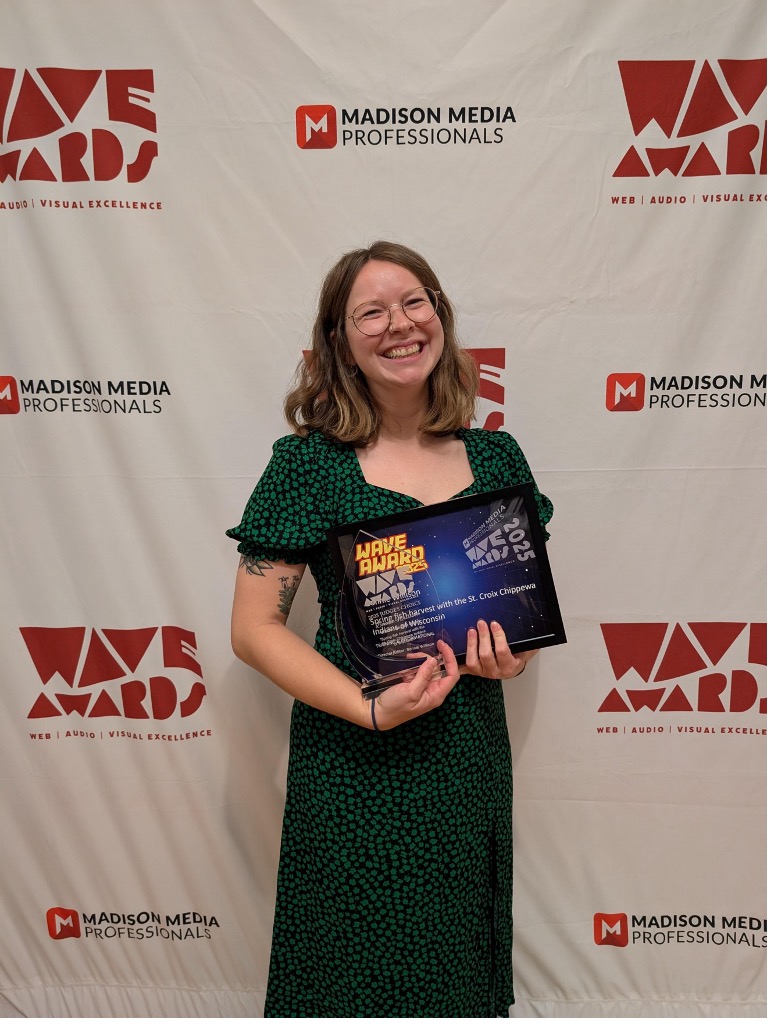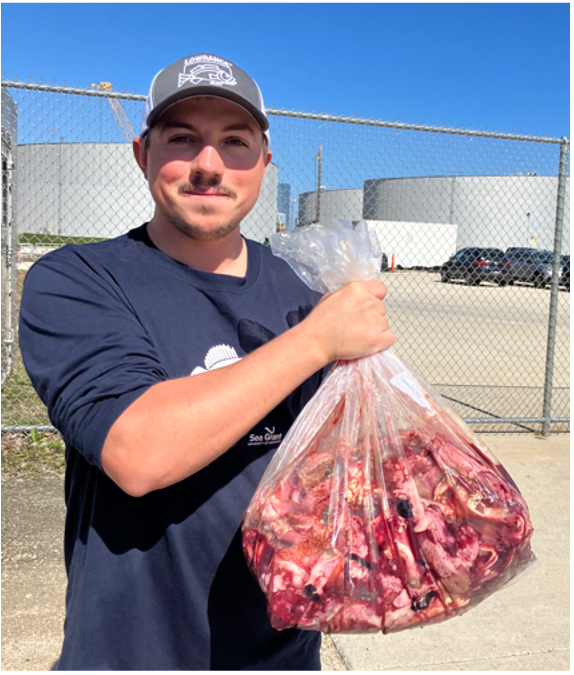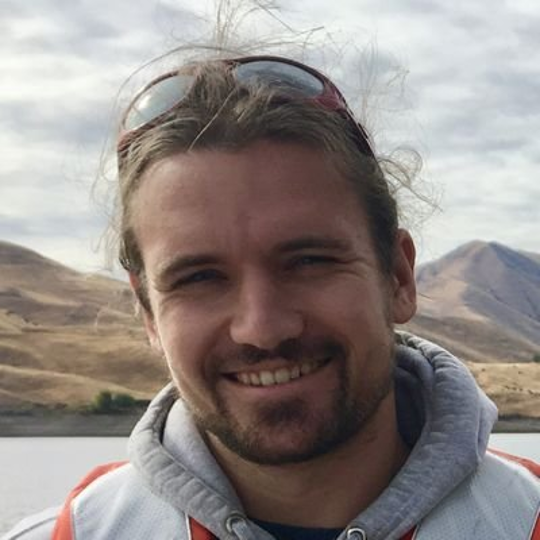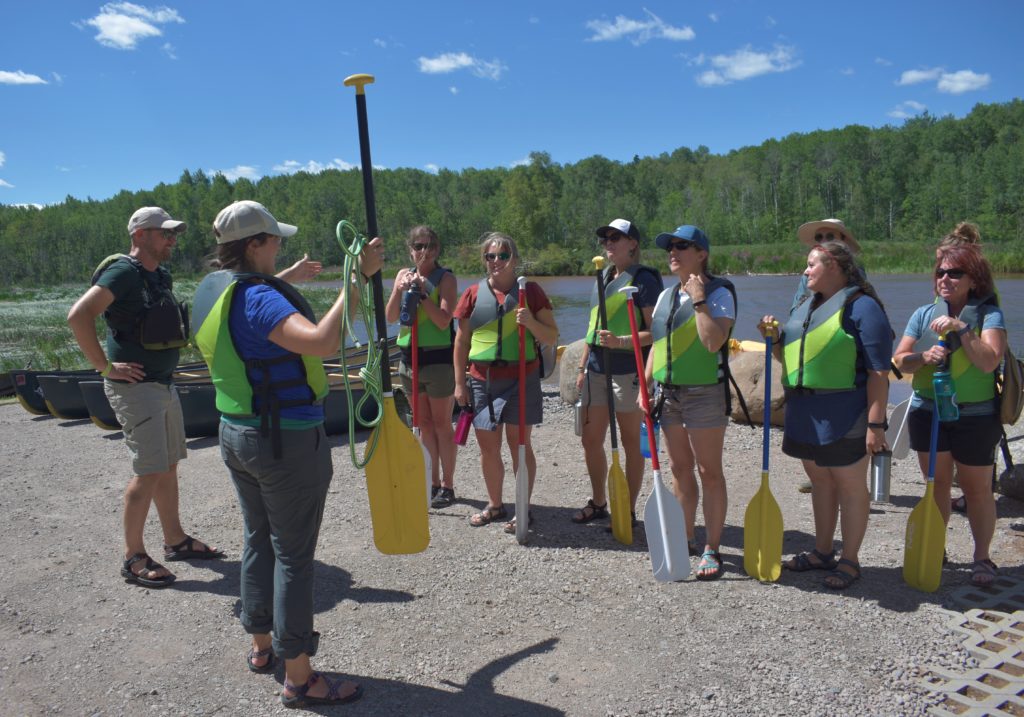
Teachers in the Rivers2Lake Summer Institute receive basic canoeing instruction from Luciana Ranelli of the Lake Superior National Estuarine Research Reserve. Image credit: Marie Zhuikov, Wisconsin Sea Grant
Teachers from northern Wisconsin and northern Minnesota received firsthand experience in their watershed recently, thanks to the Rivers2Lake Education Program run by the Lake Superior National Estuarine Research Reserve (Reserve).
Six teachers took part in a weeklong Rivers2Lake Summer Institute where they traveled the upper reaches of the St. Louis River, trapping water bugs in nets, learning how to test water quality and developing a relationship with the river and Lake Superior. They are gathering ideas and techniques to share with their students with the Reserve’s help.
This is the ninth year of the program, which has been funded in part by Wisconsin Sea Grant for four of those years. One activity during the institute involved a short canoe trip around Pokegama Bay in Superior, Wisconsin. The teachers learned why the area is important.
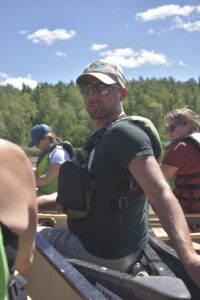
Ryan Feldbrugge, education specialist with the Reserve. Image credit: Marie Zhuikov, Wisconsin Sea Grant
“Pokegama is our reference site,” said Ryan Feldbrugge, education specialist with the Reserve. “It’s an example of an undisturbed or minimally disturbed ecosystem.”
Feldbrugge explained how the Reserve monitors conditions in the area with a meteorological station and water quality equipment. “The idea is to have baseline data so we can track how the wetlands are changing and how the plant communities are changing so that we can do stewardship or restoration efforts if that’s what’s needed.”
Luciana Ranelli, Reserve education coordinator, said the quiet, protected bay is also a good place for students to explore the St. Louis River Estuary. “You could imagine your tiny tikes or older students here, doing what we are doing,” she said to the teachers. Plus, a new boat launch developed by the Reserve, city of Superior and the Wisconsin Coastal Management Program provides easier access and vault toilets.
During that recent canoe trip, the teachers battled wind past the meteorological station and learned about purple loosestrife, a pretty but invasive plant scattered along the bay’s shores. Feldbrugge said the Reserve has been working closely with the Wisconsin Department of Natural Resources for several years to rear and release beetles that feed exclusively on loosestrife. They are slowly making progress in controlling the plant in the estuary.
Two guests joined the teachers: Noah Pinnsonault, a research and monitoring technician for the Reserve, and Megan Hogfeldt, a water resources specialist with the city of Superior. Once out of the wind, the teachers rafted their canoes together to hear Pinnsonault describe work he’s doing to address damage by the emerald ash-borer beetle, which destroys black ash trees, a prevalent tree species in the estuary. He’s determining survival rates for alternative tree species that were planted in 2015. These include hackberry, northern white cedar and red maple.
“In really low-lying sites, black ash is basically the only thing that will grow there. So, we’re trying to figure out what besides the ash will work. If we can’t save the black ash, we need to at least preserve the ecosystem function and keep it forested, otherwise, everything will change,” Pinnsonault said.
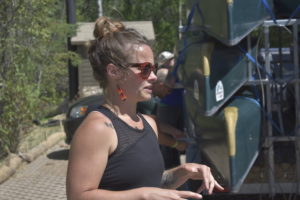
Megan Hogfeldt, a water resources specialist with the city of Superior. Image credit: Marie Zhuikov, Wisconsin Sea Grant
Once back on shore, Hogfeldt described the stormwater control work she does for the city, while Reserve staff loaded the canoes on their trailer. “If you haven’t been through Superior, the city has about seven streams that go through it. We’re always interacting with water in Superior and Duluth,” Hogfeldt said.
She offers several programs that teachers and their classes can participate in, such as storm drain art, a stream monitoring program and an adopt-a-storm drain program.
After the institute completes, the Reserve offers teachers continued support to integrate Lake Superior science, history, research and stewardship into their classrooms.
“The effects have been transformative,” Ranelli said. “Teachers appreciate the sustained support through the school year, and students in Rivers2Lake classrooms have improved learning and enhanced engagement. We’re proud to support local teachers and students in learning about their watershed.”
For at least two teachers on the paddle, this wasn’t the only time they’ve been on the water with Reserve staff. Melissa Hepokoski from Cooper Elementary School and Jasmine Haroldson from Northern Lights Elementary attended an Outdoor Learning Clinic for two days last summer.
In her teacher institute evaluation, Haroldson offered, “The presenters were an amazing asset – so knowledgeable and excited! The nonthreatening, supportive community that was built in just four days will be so beneficial to me. I now have a huge library of resources — people and print — at my fingertips.”
For information about the Reserve’s work with Rivers2Lake students, please see this previous story.
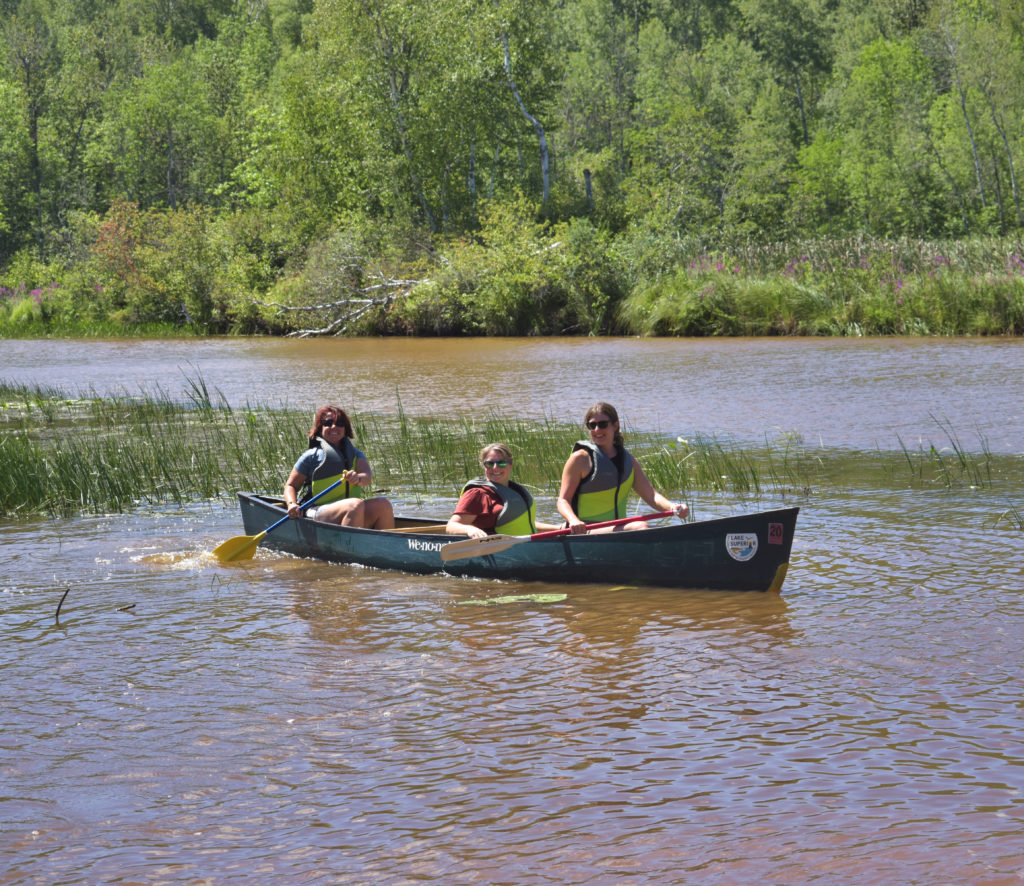
Educators Melissa Hepokoski, Shawn Stewart and Jasmine Haroldson enjoyed their paddle time on Pokegama Bay. Image credit: Marie Zhuikov, Wisconsin Sea Grant



